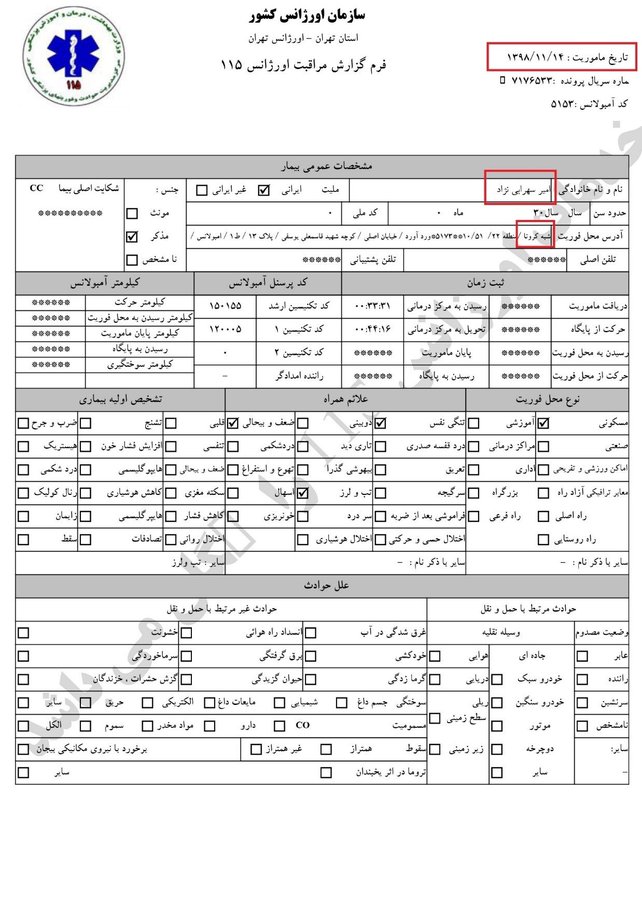
The People’s Mojahedin Organization of Iran (PMOI, Mujahedin-e Khalq or MEK) announced on Wednesday that nearly 16,000 people have lost their lives due to the coronavirus outbreak.
Since the novel coronavirus first reached Iran on flights from China, doctors and activists have been raising alarms about its impact on Iranians. But after beginning with outright denial, the clerical regime’s response morphed into a more sophisticated disinformation campaign and has lately begun to focus on scapegoating Western “enemies” for an increasingly undeniable disaster.
According to regime authorities, the total number of Covid-19 cases surpassed 40,000 at the beginning of this week. Barely a day later, 3,000 of these were acknowledged as fatal. But despite recording daily growth by thousands of cases and over 100 deaths, the regime’s narratives still fall far short of describing the dire situation described by Iranian medical professionals, as well as the reports by the MEK.
Iran: #Coronavirus death toll exceeds 15,500 in 237 cities
The People’s Mojahedin Organization of Iran (PMOI / MEK) announced this afternoon, April 1, 2020, that the fatalities of Coronavirus have risen to more than 15,500 in 237 cities across #Iran.ncr-iran.org/en/ncri-statem…
70 people are talking about this
Many of these reports have highlighted trends involving dozens of deaths, daily, at individual hospitals. In early March, at least one nurse posted a video online detailing her experiences after the one-day fatality rate exceeded 100 patients. But not only did the regime’s authorities dismiss her account when presenting their own narrative to the public; they arrested her for contradicting it. She was far from the only person to suffer this fate, and other medical personnel have told Western journalists they believe they’re being monitored.
The regime’s judiciary made it clear in February that “rumor mongering” about the coronavirus could land a person in prison for up to three years, as well as making them subject to punishment by brutal lashing. Subsequent incidents made it clear that the regime’s authorities have no qualms about following through on these threats even when the targets are doctors and nurses whose services are desperately needed to save the lives of their countrymen.
At the same time, government institutions have reportedly been hoarding and misallocating medical resources, including personal protective equipment, with the effect of greatly increasing risk of sickness and death for medical professionals. The MEK has been closely tracking the number of coronavirus-related deaths, both among hospital staff and within the general public. And according to the activist coalition, more than 100 doctors and nurses have died so far.
It would be bad enough if the Iranian regime was simply concealing these facts in order to discourage panic and mask the incompetence of its crisis response. But the reality is much worse, because it was more than simple incompetence that led Iran into this catastrophe. Regime authorities didn’t just downplay the impact of the pandemic after it had already taken hold. They denied that it was even happening, and they effectively encouraged people to get sick, knowing full well that many of them would die.
Some of the latest disclosures from the National Council of Resistance of Iran (NCRI) and the MEK confirm these facts. Last week, the coalition published documents that an activist network obtained from Iran’s National Emergency Organization. The documents described hospital admissions for half a dozen people suspected of having coronavirus. And although the official government documents were dated January 28, it was not until February 19 that regime officials made their first public statements acknowledging that the illness has reached Iran.
Q&A with Ali Safavi on the Cause of the #Coronavirus Spread in Iran #COVID19 ncr-iran.org/en/news/human-…
82 people are talking about this
Even then, the statements dramatically downplayed the seriousness of the situation. As a precursor to public narratives blaming US sanctions and foreign conspiracies for the rising death toll, officials declared in February that fears of the coronavirus were the product of Western propaganda aimed at demoralizing Iranians ahead of that month’s parliamentary elections.
A month later, the regime’s president Hassan Rouhani actually used this as grounds for praising his own government. “Although elections were scheduled for February 21, we could have waited and announced on February 22,” he said blatantly. “But we did not do that and spoke honestly with the people.” The National Emergency Organization documents reveal this as a bald-faced lie. And even Rouhani’s own remarks gloss over the fact that the regime made no effort whatsoever to encourage precautions among voters.
#Iran: Blatant Lies by Mullahs’ President Hassan Rouhani
Rouhani: “We learned on February 19 that #Covid_19 had come…We did not delay even a day.”
Documents show that on February 4, 2020, a significant number of patients had been hospitalized in Tehranncr-iran.org/en/news/human-…
62 people are talking about this
Instead, he and various other officials insisted upon the highest possible voter turnout. Meanwhile, early whisperings of an emerging epidemic provided them with a cover-story for when that turnout ultimately failed to materialize. The vast majority of Iranian citizens boycotted this year’s parliamentary elections as a sign of opposition to the theocratic dictatorship. But among those few people who did go to the polls, thousands surely became sick over the next two weeks and spread the virus among all Iranians.
The same can be said of those who attended anniversary celebrations for the regime’s foundation earlier in the month. For more than a week leading up to the carefully stage-managed event, regime’s authorities were aware of a deadly virus spreading among the population. Yet attendance remained mandatory for government employees, and the regime did everything in its power to fill the streets with false symbols of its own legitimacy.
There is no exact number of how many people died as a result regime’s deliberate neglect for public health. This, as much as anything else in its recent behavior, is emblematic of how much more concern the regime has for its power than for people.





Aucun commentaire:
Enregistrer un commentaire